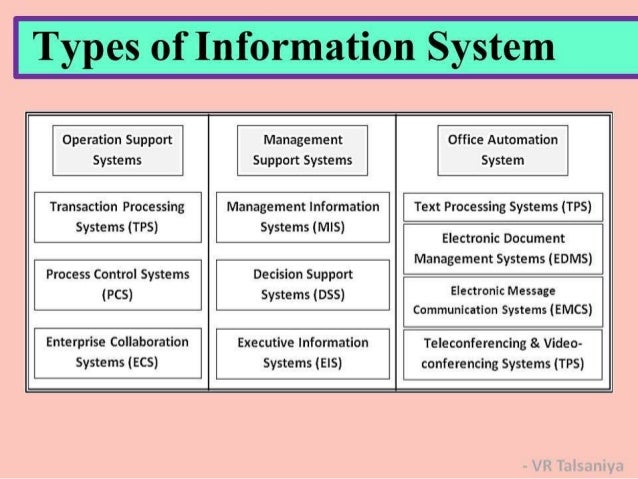Types Management Information System Pdf
Management Information System, commonly referred to as MIS is a phrase consisting of three words: management, information and systems. Looking at these three words, it’s easy to define Management Information Systems as systems that provide information to management. That is the simple definition of MIS that generally sums up what a Management Information System is, and what it should do.
However, its role and impact on the smooth operation of a company can never be overemphasized. That is the reason why every successful company makes use of these systems in one way or another.
The reason why Management Information Systems are very important in the day to day operation of companies is because these systems work with people, organizations, technology and relationships among the people and organizations affecting the company. This means that when properly implemented, Management Information Systems will help achieve a high level of efficiency in a company’s management operations. © Shutterstock.com one photo This explains why since the graduates have practical knowledge that will help them develop more efficient solutions thanks to their systems perspective of business processes developed in their training in Management Information Systems. In the decade between 2014 and 2024, the US Bureau of Labor Statistics predicts that MIS professionals, and specifically database administrators, should expect when compared to all the other occupations.
In this guide, we explore 1) the history of Management Information Systems, 2) types of information systems, 3) components of Management Information Systems, 4) its role in business, 5) common advantages and disadvantages of using MIS, and 6) tips for effeccctively applying MIS in your business. HISTORY OF MANAGEMENT INFORMATION SYSTEMS Owing to the strong link between Management Information Systems and technology, the history of these systems goes hand in hand with the history of computing technology. With that said, we will split the evolution of MIS into five eras. Let’s take a closer look at what changes were effected in each of these eras. First Era: Computing on Mainframe and Minicomputers This was the era before 1965 when computing was done on large mainframe computers located in large special rooms designed specifically for the computers.
Types Of Information Systems
1.6 Role of Management Information Systems in an Organization. The role of the MIS in an organization can be compared to the role of heart in the body. The information is the blood and MIS is the heart. In the body the heart plays the role of supplying pure blood to all the elements of the body including the brain. Essentials of Management Information Systems Chapter 2 Information Systems in the Enterprise Human Resource Systems SYSTEMS FROM A FUNCTIONAL PERSPECTIVE Figure 2-11 15. Essentials of Management Information Systems Chapter 2 Information Systems in the Enterprise Payroll TPS KEY SYSTEM APPLICATIONS IN THE ORGANIZATION Figure 2-3 16.
This included special temperature control to ensure that the machines always operated in optimum conditions. These computers were operated by teams of technicians and hence the cost of operating them was quite high. As a result, to meet the high costs of owning and operating these mainframes. The dominant supplier of hardware and software in this era was. With time, technology advanced and towards the end of this era, minicomputers were introduced. The minicomputers were significantly smaller and cheaper, hence large companies could afford to own these and do their computing in-house. 50 cent disco inferno instrumental free download mp4. However, the minicomputers were still very expensive when compared to today’s standards.

Second Era: Personal Computers This era began in 1965 and was mainly as a result of the introduction of the microprocessor. This meant that companies could now afford cheaper personal computers, which provided access to computing power that would have cost exorbitant amounts of money just one decade before. By mid 1980s, personal computers were becoming much more affordable hence they were made available to the mass markets.